Anybody who has a complex project can benefit from using Scrum. Prioritize large to-do lists into manageable tasks with improved teamwork, better communication, and faster results. Scrum has streamlined software development — and professionals from around the world are starting to see the value of using Scrum. Of all the possible Agile frameworks used by […]
Read MoreScrum relies heavily on the concept of Timebox. Timebox is setting a fixed time limit to any activity and letting other characteristics such as Scope vary. A time box could be A Meeting A Sprint A Test activity Development Activity Or Practically anything such as you chatting with your friend on social networking site The fact […]
Read MoreDistributed Scrum Teams Today businesses are shifting to emerging economies (such as India) due to reduced business operations cost and an easily available workforce. The businesses certainly are more virtual and distributed, with “distributed” as its key element. Thus the need for better managing such teams, using the right tools and processes, is becoming increasingly […]
Read MoreValue is more like the roots of the tree. The stronger the roots, the stronger the tree is and better the fruits it bears. The 5 values of Scrum described below are basically common sense. If one can follow the 5 values of Scrum, one will have strong foundations of a great collaborative team. There […]
Read MoreRisk Burndown graphs are very useful Communication Tool for seeing if the total project risk is increasing or decreasing over time. It allows stakeholders to see instantly if we are reducing project risk. There are two key pieces of information which the Risk Burndown Graph shows immediately: Whether the overall level of risk in the […]
Read MoreRisk Boards is another powerful Information Radiator used to Communicate the status of Risks in a Agile Project This is used to make the Risks transparent to the Stakeholders. In the illustration shown here, The Risk Board indicates The Identified Risks Their Probability Impacts Planned Risk Responses This board could be reviewed on a daily […]
Read MoreA burn up chart tracks progress towards a projects completion. In the simplest form of burn up chart there are two lines on the chart: A total work line (the project scope line) A work completed line A burnup chart clearly shows both completed work and project scope. The project will be completed when the […]
Read MoreIn Scrum, decisions are made based on observation and experimentation rather than on detailed upfront planning. Empirical process control relies on the three main ideas of transparency, inspection, and adaptation. Transparency Transparency allows all facets of any Scrum process to be observed by anyone. This promotes an easy and transparent flow of information throughout the […]
Read MoreIn its most basic form, a task board can be drawn on a whiteboard or even a section of wall. Using electrical tape or a dry erase pen, the board is divided into three columns labeled “To Do”, “In Progress” and “Done”. Sticky notes or index cards, one for each task the team is working […]
Read MoreThe Retrospective is the event in Agile which brings in the iterative, inspective and adaptive nature into picture. The team reflects upon the previous timebox with a view to learn some lessons, adjust the behavior or environment in order to improve their experience. A Retrospective is a special meeting that takes place at the end of […]
Read More